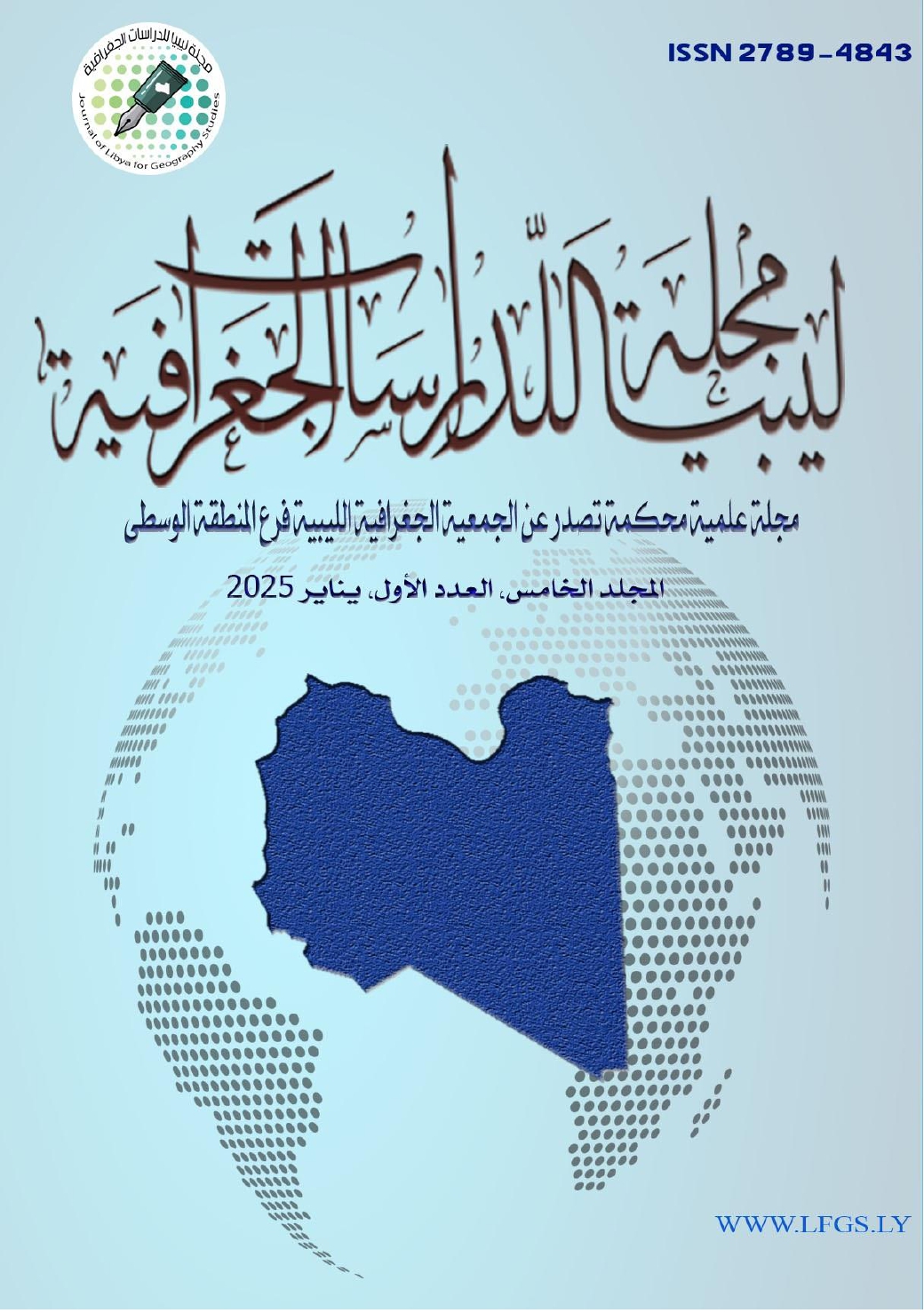Global warming and it’s effect on the frequency of sand storms in the Libyan desert (Sabha station, a case study)
DOI:
https://doi.org/10.37375/jlgs.v5i1.3114Keywords:
global warming, sand storms, heat depressions, winter depressions SabahAbstract
Studies have shown that global warming manifests itself in higher temperatures and longer precipitation as a direct result of seasonal changes in atmospheric pressure and associated winds. The cause of sand storms in the Libyan desert is either due to thermal depressions that generate on top of themselves due to the intense rise in surface temperature in the summer and fall. Or it is the result of rushing winds in the late air depressions crossing the Mediterranean Sea from west to east during the winter and spring seasons. This study is a continuation of a previous study (Maqili 2024, p. 95), which showed a statistically significant decrease in the series of extreme rainfall values in the city of Nalut and a statistically significant increase in the series of extreme minimum temperature values in the city of Ghadames. The data used in this study are the numbers of annual sand storms recorded by the National Meteorological Center in the city of Sabha during the period (1962-2009). The series was divided into two periods for comparison. The first period was from (1962-1985), while the second period was from (1962-1985). 1986-2009). Statistical analysis represented by (t-test) was used for the differences between the averages, and the results showed that sandstorms during the first period were more frequent with a statistical significance of 0.01, which means that global warming is causing a decrease in the number of sandstorms in the Libyan desert, which is acceptable from this angle, except It is considered disastrous for the agricultural and pastoral areas of the north, as it exacerbates the problems of desertification there, due to the lack of rain from the winter depression storms that have taken paths farther north.
References
- أبو يوسف، محمد (1989)، الإحصاء في البحوث العلمية، المكتبة الأكاديمية، القاهرة.
- المركز الوطني للأرصاد الجوية (2022). عدد أيام العواصف الرملية. محطة سبها الفترة (1962-2009) بيانات غير منشورة، طرابلس.
- الهيئة الحكومية الدولية المعنية بتغير المناخ (2007)، تغير المناخ 2007 التأثيرات والتكيف والتأثر، UNEP وWMO.
- عدس، عبد الرحمن(1997)، مبادي الإحصاء في التربية وعلم النفس، ط1، دار الفكر، عمان.
- مراد، محمد مروان جميل (1998)، التسخين الكوني يخنق مناخ العالم، المدينة العربية، العدد 83 أبريل.
- مصلحة المساحة(1978)، الأطلس الوطني للجماهيرية العربية الليبية الشعبية الاشتراكية، اسكتهولم، السويد.
- مصلحة المساحة، خريطة الحدود الإدارية لليبيا، طرابلس 2010.
- مقيلي، إمحمد عياد محمد (2024)، الاحتباس الحراري العالمي وأثره على التطرف المطري والحراري بمحطتي أرصاد ليبية، مجلة ليبيا للدراسات الجغرافية، المجلد الرابع، العدد الثاني، يوليو.
- National Academy of Science, Climate Research Board, Washington. D. C. 1979.
- Carbon Dioxcide and Climate: Scientific Assessment, Smagorinsky, J., 1983: Effect of Carbon Dioxcide. Changing Climate. Chapter 4., Section 4.1.
- Newman, J.E.: Climatic Changes: Some Evidence and Implications. Weatherwise. VOL 42. No (2) 1971.
- John Silk: Statistical Concepts in Geography. George Allen and Unwin. London. 1979.
- Thom, H.C.S.: Some Methods of Climatological Analysis. W.M.O. Note.81. 1966.
- Siegel, Nonparametric Analysis for Behavioral Sciences. Mc Grow-Hill Book Comp. New York. 1957.
- Maurice Yeates. An Introduction to Quantitative Analysis. In Human Geography . Mc-Graw-Hill Book Company. New York. 1974, P 190.
- Julian, P.R, and R.M. Chervil” A Study of the Southern Oscillation and Walker Circulation Phenomenon” Mon. Wea. Rev. vol(106) 1978.
- Rasmussen, E.A. and T. H. Carpenter “ Variations in Tropical Sea Surface Temperature and the surface wind fields associated with Southern Oscillation. Elninio” .Mon. Wea. Rev. vol(110) 1982.
- Mcbride, J.l. and Nicholls, N.” Seasonal Relationships Between Australian Rainfall and The Southern Oscillation”. Mon. Wea. Rev. vol (111) 1983.














